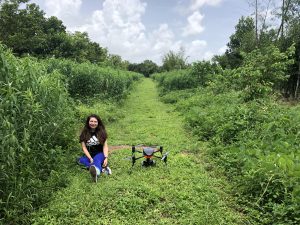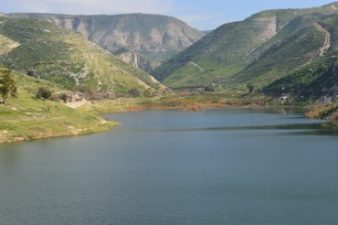
Care for wild edibles as if you’d grown them yourself, and they’ll come back year after year.
The Jewish springtime Tu B’Shvat festival is just around the corner on Wednesday night, the 19th of this month. The flowering of the almond trees on that day also signals new green growth on Israel’s dry soil. It’s tempting to go out, field guide in hand, and fill a backpack up with lots of edible wild greens.
But over-enthusiastic foraging can backfire. When plants aren’t allowed to re-seed, or if most in an area get uprooted, there won’t a new crop for next year.The forager will have to search farther afield to find the healthy, tasty wild plants that once grew close to home, while the plants slowly recede and disappear from the landscape.
You can always cultivate your favorite weeds at home in a windowbox. Or identify the edible ones growing in your garden. But for those who love to pick their weeds out in nature, here are sensible guidelines for ethical foraging. Just remember – never eat a strange plant – even safe plants have toxic look-alikes. If you’re not 100% familiar with a wild green, take a specimen home to identify with a field guide. Then learn about its edibility and other uses via the valuable Plants for a Future Database.
Guidelines for Ethical Foraging
- Byepass the first one. Don’t pick the first of any species that you see. Walk further on and make sure there are more of that plant growing around. Picking one lonely plant means there won’t be even one to reproduce and re-populate the area in the future.
- Leave Big Mama alone. Recognize the “mother” plant and don’t pick it. Often, in the middle of a patch, you’ll see a particularly strong or big specimen. That’s the “mother,” whose roots or seeds are probably responsible for much of that particular herb in the area. Respect it, leave it alone, and pick from its descendants.
- The rule of one-third. Pick only up to one-third of leaves and flowers from any one plant. For example, if picking mallow flowers or the ripe “cheese” fruit on it, leave at least two-thirds on the plant. If gathering many herbs, like nettles, pick only up to one-third of all the plants in the area. That gives the plants the numbers of potential surviving seeds that they need to keep coming back next year.

More on foraging weeds and eating them on Green Prophet:- 5 Edible Weeds You Can Pick Yourself
- Chicory, Traditional Middle-Eastern Greens
- Go Wild with Edible Weeds
Photos of “mother” stand of nettles and flowering mallow plants by Miriam Kresh.



